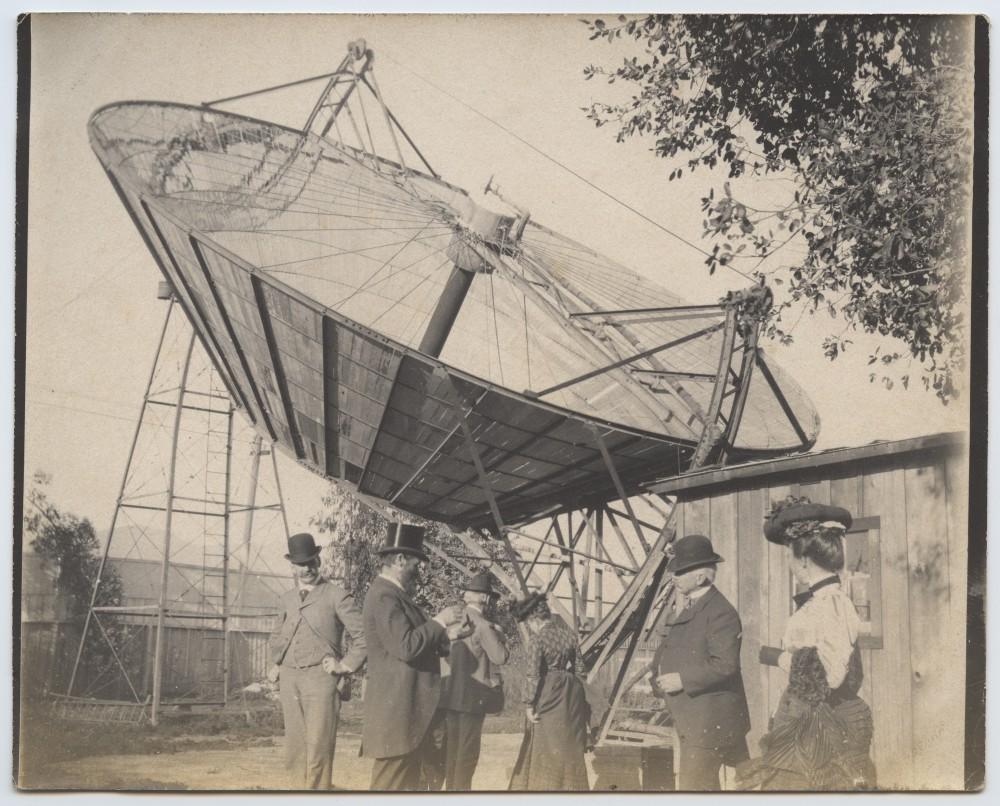Art exhibit shows history of renewable energy

GVL / Courtesy – Glen E. Swanson
Aug 31, 2015
Devices for producing solar, wind, steam, and other renewable energy sources weren’t invented yesterday. In fact, they were invented much earlier. A new exhibit, named “Nothing New Under the Sun” tells the story of renewable energy and its extensive history.
A group of photographs, the oldest photograph from the mid-1800s and the most recent from the turn of the 20th century make up the exhibit and illustrate the history of renewable energy.
“Nothing New Under the Sun” can be seen at Grand Valley State University in the Thornapple Room, located on the lower level of the Kirkhof Center, during any time that Kirkhof is open. The exhibit made its debut in June and will be on display until Dec. 18, 2015.
Glen Swanson of the GVSU physics department is the guest curator for “Nothing New Under the Sun.” The idea for the exhibit came from a book Swanson is writing that focuses on several of the machines and devices depicted in the exhibit. The exhibit itself focuses on the different types of devices that produced renewable energy in the late and mid-19th century. The display includes photographs and drawings of these devices with descriptions included to help viewers learn more about them.
“They look very familiar to us, just like something we have today, only it has more rivets and it’s in black and white,” Swanson said.
David Newell, the curator of exhibitions at GVSU, made it possible for Swanson’s idea to come to life.
“We did an interactive component in the gallery that uses a censor device that is actually generating the electricity from the ambient light in the room,” Newell said. “There’s a little gauge on it where you’re able to see how much electricity is being produced. If your shadow crosses over it, you’re able to see the energy level drop.”
Swanson had the opportunity to create the “Nothing New Under the Sun” exhibit through a service GVSU offers, encouraging its staff members to take advantage of the opportunity to contribute artwork and tie it in with their research. This shows students what they have been up to and share the art with them.
“I’ve been to other universities before and I don’t recall seeing as much artwork on the campus,” Swanson said.
Swanson said that the art on campus can act as a landmark to help remind students where they are and potentially help them find their way around campus.
After viewing “Nothing New Under the Sun,” Swanson said he wants students to take away the knowledge that renewable energy-producing devices have been around for a while and they aren’t really unique. He explained that innovators in the 19th century had already developed these technologies, but in that time period, renewable energy resources weren’t as widely accepted as they are today. The technology has been improved upon since then, but the idea itself has been around for quite some time.
Newell said that the major improvement on these kinds of technologies was the invention of batteries that acted as a way to store the energy that was being produced. He said he hopes that students “marvel at the technology that the exhibit represents.”
Newell said he hopes that “Nothing New Under the Sun” inspires students to do research of their own. Swanson said he hopes that students will learn something they hadn’t been exposed to before.






















